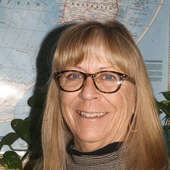- Research tips and McCook Brick Company- solid as a brick (12/16/24)
- Big Give appreciation and some railroad characters (11/15/24)
- George Randel becomes a landowner, gets married, and takes in a Buffalo Bill show (9/20/24)
- The memoirs of George F. Randel, early settler of Red Willow County (9/12/24)
- Vietnam War Memorial honors Nebraskans who served (6/13/24)
- McCook business promotions - just prior to 1893 stock market crash (5/30/24)
- Shall we dance? Meet you at the Gayway (12/8/23)
Soup bags and other novel ideas
Friday, December 8, 2017
We’re having fresh broccoli for dinner so as I was cleaning it, I didn’t throw the stems away but rather peeled them, sliced them and threw them in my soup bag in the freezer. I think you can probably guess my age by the fact I have a soup bag, or maybe you don’t even know what that is! Well, a soup bag is where you store all the bits and pieces of veggies left over from a meal. Don’t throw that tablespoon of beans away; put them in the soup bag along with all the other dabs of vegetables that seem to still be in the pan after everyone has eaten. Same with left- over meat, a bit of steak, a slice of brisket, a handful of roast, slice them into bite size portions and freeze in a different bag. When your soup bags get full enough, break out the beef base and instant soup! These were also called Friday night bags because you could have an instant meal when the groceries had run out before your Saturday shopping trip. Left over mashed potatoes, put them in potato soup to make it thick and creamy!
There are several people interested in where certain buildings were located back in the day. Recently the question of the Morris Building came up and with a fair amount of searching; I found that it was the present day Garrison’s building. The question was raised because the Oddfellows group met there on the upper floor. The building directly south of it was of course the original First National Bank building, now law offices. Most of the buildings at one time or another had names and luckily some still have that name carved in a stone façade, but today many of those buildings have been so remodeled that even a discerning eye has a hard time matching today’s version to the original. The Temple building (NW corner of D and Norris) is a perfect example because at one time it was a stone block building with arches and impediments similar to the building that houses McCook Abstract.
If you want to determine where a building might have been located, the Sanborn maps are a good place to start. Sanborn maps were drawn up for insurance purposes and they note when a building housed something that could be considered a fire hazard as on one map that points out a sausage room and kettle in the back of a meat market on main street. SWNGS has four years of these maps online: 1889, 1897, 1909, and 1921. A tiny personal note: The courthouse has my home on East First Street as having been built after a certain date, a date I believed was off by over ten years, and three things helped me determine that to be true. First, the 1909 Sanborn map shows my home and all of the houses in the four hundred block as built. Second, a photograph I found at the museum showed my home in place prior to the Carnegie Library being built in 1909. Third, during a remodel a letter was found in my attic space showing that the McCarls had lived in my home and a search of Red Willow County Clerk records had them owning the property @ 1904. What may have thrown the date of construction off was the fact that there was no mortgage on the property until after 1915. The fact that A. Barnett’s daughter was Mrs. John (Ethal) McCarl might have something to do with the fact there was no mortgage on the home when it was built.
SWNGS continue their open library hours on Tuesdays and Thursday starting at 1 PM. Join us at 110 West C, Suite M-3. We will not be open on Christmas day.

